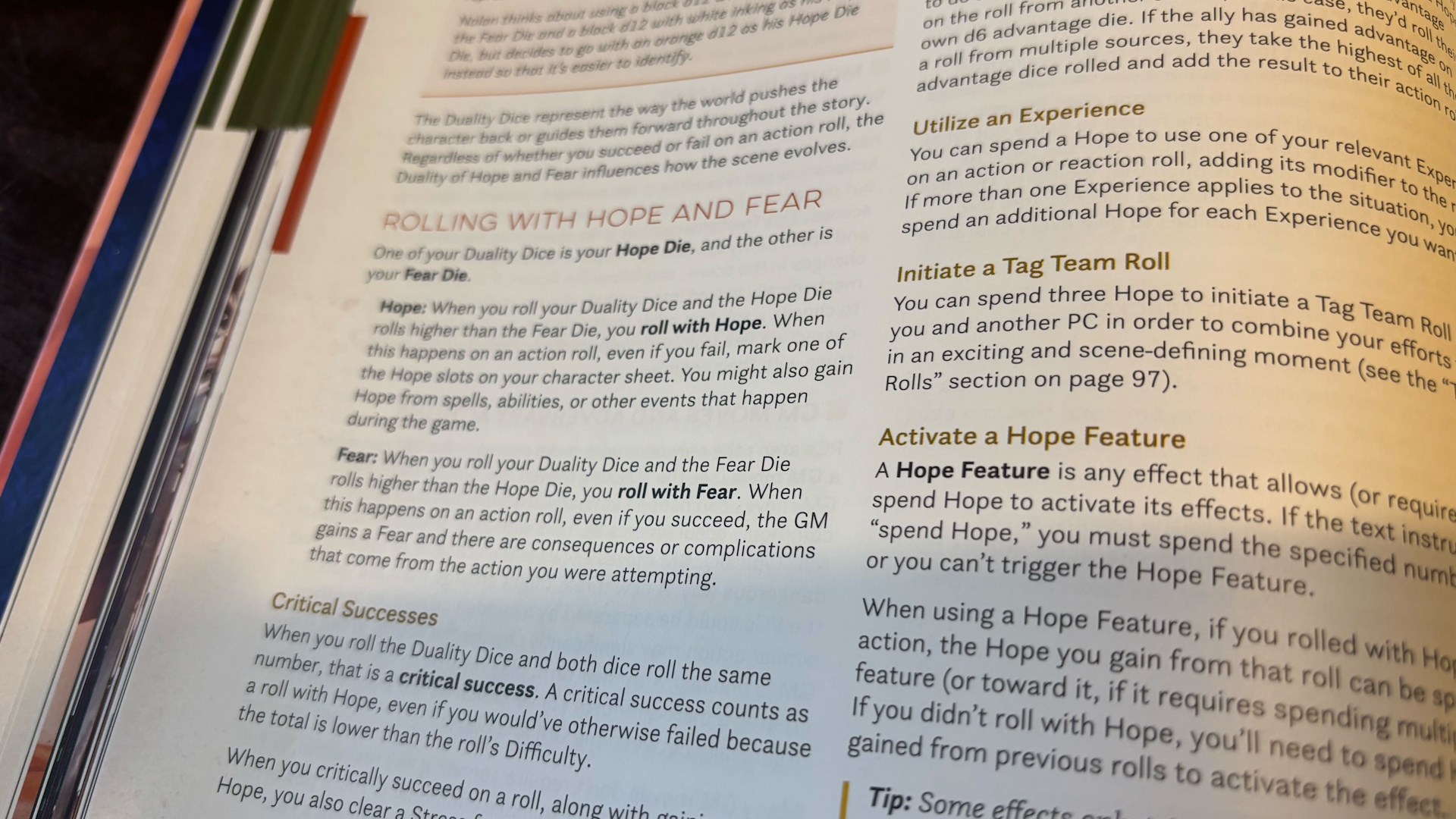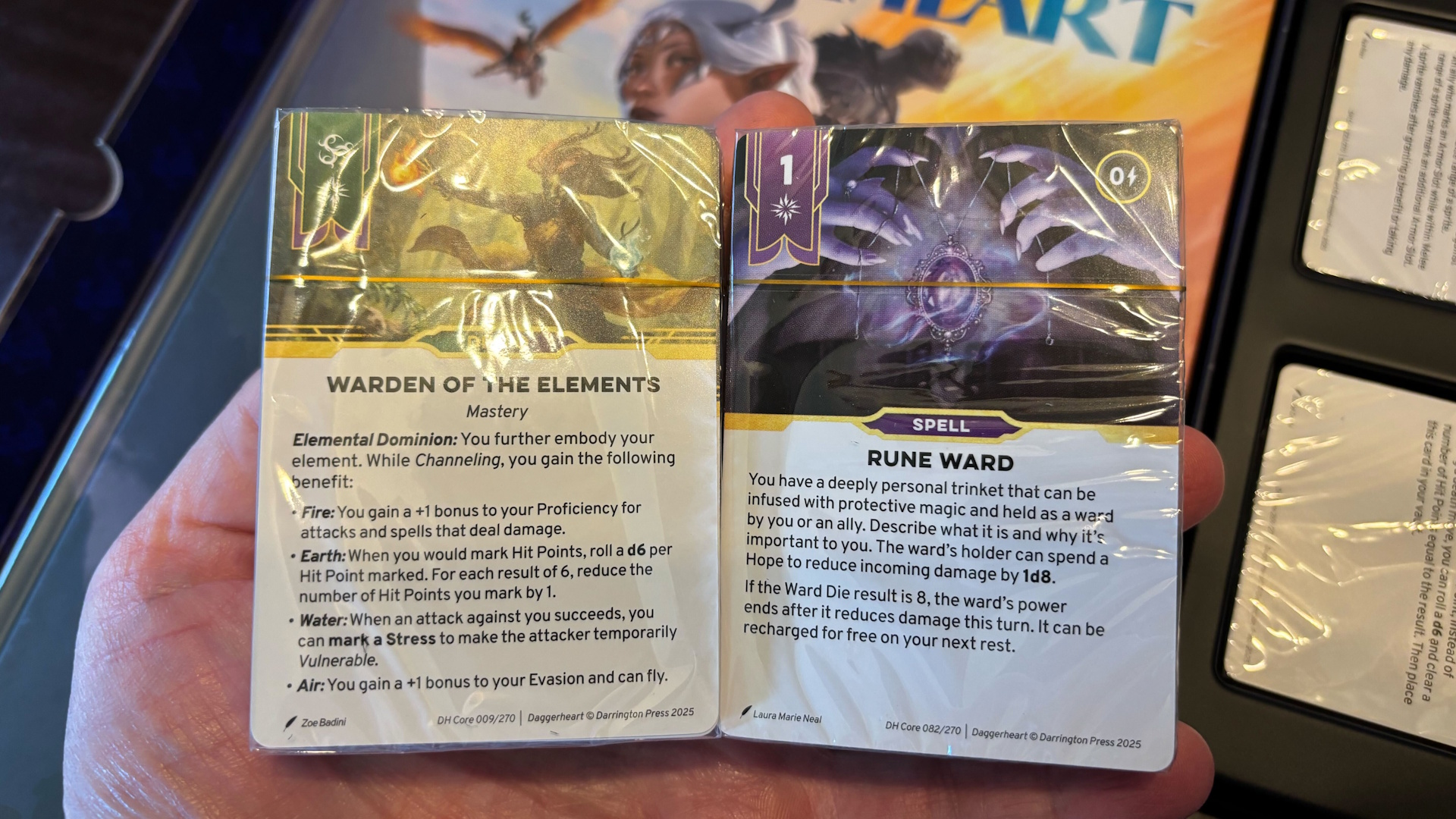Daggerheart is hoping it can tempt you away from D&D, and honestly? The Critical Role RPG may just be able to pull it off.
Not that it’ll be easy, mind you. Anyone trying to crack the world of pen-and-paper RPGs is in for an uphill battle. As one of the oldest and most popular fantasy roleplaying games, D&D is like a tree that’s grown so large it hogs almost every drop of sunlight – all the plants around it struggle to grow in its shadow. That’s why the best tabletop RPGs have to adopt a different approach if they want a chance at survival, and Daggerheart has opted for something Critical Role is famous for – the classic “yes, and” exercise.
While Daggherheart is still a swords-n-sorcery RPG in the classic sense, it’s far more narrative-focused than D&D. Yes, it differentiates itself by using physical ability cards and a unique dual-dice mechanic. But focusing on your character’s emotional journey rather than the strength of their sword arm is why publisher Darrington Press hopes you’ll sign up.
The Critical Role method

“Daggerheart is a game that is specifically designed for narrative-focused play,” one of the game’s designers, Spenser Starke, tells me when we catch up ahead of launch. “If collaborative storytelling and world building is something that is really interesting to you, I think Daggerheart offers some really cool tools and some really fun mechanics that reinforce that kind of play-style at the table… I really want a game that encourages all of us to be collaborative storytellers together. And so I wanted Daggerheart to capture that vibe and then empower people to go off and play the way that we play at our tables, and kind of what [Critical Role] has become known for.”
With that in mind, I find the way Daggerheart ‘gamifies’ the relationship between Game Master and players appealing. Yes, it’s all about creating a cool story together. And no, the GM isn’t working against the party per se. But the addition of ‘Hope’ and ‘Fear’ tokens – which are earned by players or GMs respectively – change how you approach play. Players amass Hope after certain action rolls, and these are spent to provide a bonus or benefit. Because you can only hold six at a time, Daggerheart actively encourages you to spend them. This helps nudge players outside of their comfort zone or to think creatively.
“Statistically, you’re earning [Hope] about half the time if your dice behave,” fellow designer Rowan Hall tells me. “So we want people to spend hope freely. And therefore we attached mechanics that we want to be buttons that people can push more often. We also made sure that the mechanics that were attached to spending Hope also aligned with the idea of hope. So for example, the ‘help’ action will require you to spend Hope, because narratively, we’re saying, ‘I want my friends to do better.'”
Fear tactics

Fear, on the other hand, is collected by GMs. These add complications to the narrative or, as Hall notes, “increase the dramatic tension.” Besides giving Game Masters permission to turn the screws, it results in a tense back-and-forth that raises the stakes. It’s a bit like the RPG version of that “yes, and…” exercise; things escalate in memorable, chaotic ways. It’s the stuff water-cooler conversations are made from. After all, Starke reminds me, you can’t be a hero without overcoming adversity.
“Fear helps me as a GM to make harder moves,” Starke says. “To put [players] into harder situations. They see that I’m spending a resource to do that, and they know that I’m acknowledging I’m doing this, because the story is both asking me to do it and because I want to watch you all go up against this thing. That’s one of the big GM things – be a fan of the players. On the GM side, you’re playing a different game… Your job is to put things in front of [the party] and help them to tell the story they want to tell by providing the obstacles.”
This is the kind of thing that gets a battleworn GM like me excited to play Daggerheart rather than defaulting to D&D yet again – along with providing an experience you’d be hard pressed to find anywhere else, it helps me become a better Game Master. It also lifts some of the load from me by emphasizing that collaborative spirit – something I’m grateful for considering how long I spend planning sessions each week. If anything was going to tempt me away from D&D, it’s that.
I’ll be giving my thoughts on Daggerheart soon, and you can try it yourself by ordering direct from Darrington Press or grabbing the core rules for $55.79 at Amazon.
Want to try something new? Check out the best board games, or the best board games for 2 players.
